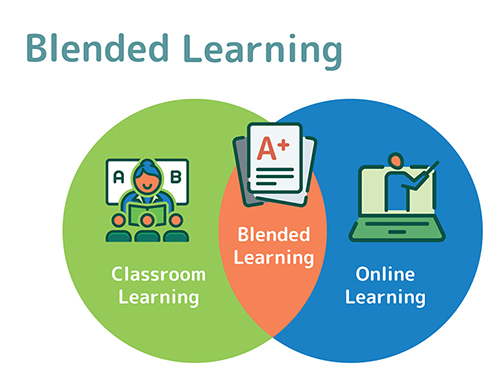
18 January 2021 – Osman Bedel –
Blended Learning: A Transformative Approach for Personalized Education
In the ever-evolving landscape of education, innovative approaches are reshaping the traditional classroom. Blended learning has emerged as a dynamic educational model that combines the best of both worlds:Understanding Blended Learning
Blended learning combines in-person classroom instruction with online learning components. It acknowledges that every student has unique learning preferences and aims to create a learning environment that accommodates individual needs. In this approach, students engage in face-to-face interactions with teachers and peers, while also utilizing online resources, platforms, and tools to supplement and enrich their learning experience.
Key Components of Blended Learning
-
Face-to-Face Instruction: Blended learning retains the value of in-person instruction, allowing students to actively engage with their teachers and peers. Classroom interactions provide opportunities for immediate feedback, collaborative discussions, and hands-on activities, fostering social connections and a sense of community.
-
Online Learning Resources: Blended learning integrates online resources and platforms to enhance and extend the learning experience. Students can access a wealth of digital materials, such as videos, interactive tutorials, simulations, and educational websites, to reinforce concepts, delve deeper into topics, and explore different perspectives.
-
Personalization and Differentiation: One of the greatest strengths of blended learning is its ability to personalize instruction. Students can progress at their own pace, revisit challenging concepts, or explore additional resources based on their individual needs and interests. This flexibility promotes a deeper understanding of the subject matter and caters to different learning styles.
Advantages of Blended Learning
-
Flexibility and Accessibility: Blended learning offers flexibility in terms of time, location, and pace of learning. Online components allow students to access course materials, assignments, and resources at any time and from anywhere with an internet connection. This flexibility accommodates diverse schedules, learning preferences, and individual circumstances, ensuring that education is accessible to all.
-
Personalized Learning Experience: Blended learning empowers students to take ownership of their learning journey. Online resources enable individualized and self-paced learning, allowing students to focus on areas where they need additional support or explore advanced topics. This personalized approach fosters a deeper sense of engagement, motivation, and ownership of learning outcomes.
-
Enhanced Student Engagement: Blended learning harnesses the power of technology to create engaging and interactive learning experiences. Multimedia elements, gamified activities, and online discussions capture students’ attention and foster active participation. The integration of technology stimulates curiosity, creativity, and critical thinking, making the learning process more enjoyable and meaningful.
-
Accelerated Learning Opportunities: Blended learning provides avenues for students to accelerate their learning. Online courses and resources offer opportunities for advanced coursework, enrichment activities, or credit recovery. Students can explore subjects of interest, pursue self-directed projects, or access a broader range of courses that may not be available within their traditional school setting.
-
Preparation for the Digital Age: Blended learning equips students with essential digital literacy and technological skills. In an increasingly digitized world, proficiency in online communication, research, collaboration, and critical evaluation of information is crucial. By incorporating technology into their learning, students develop the skills necessary for success in higher education and the workplace.
Blended learning has revolutionized the educational landscape by integrating the benefits of both face-to-face instruction and online learning. This approach recognizes and supports the diverse learning needs of students, providing flexibility, personalization, and enhanced engagement. As educators strive to prepare students for an ever-changing world, blended learning offers a transformative approach that empowers learners to reach their full potential and thrive in the digital age. By embracing blended learning, we can create dynamic educational experiences that inspire a lifelong love of learning and equip students with the skills they need to succeed.






